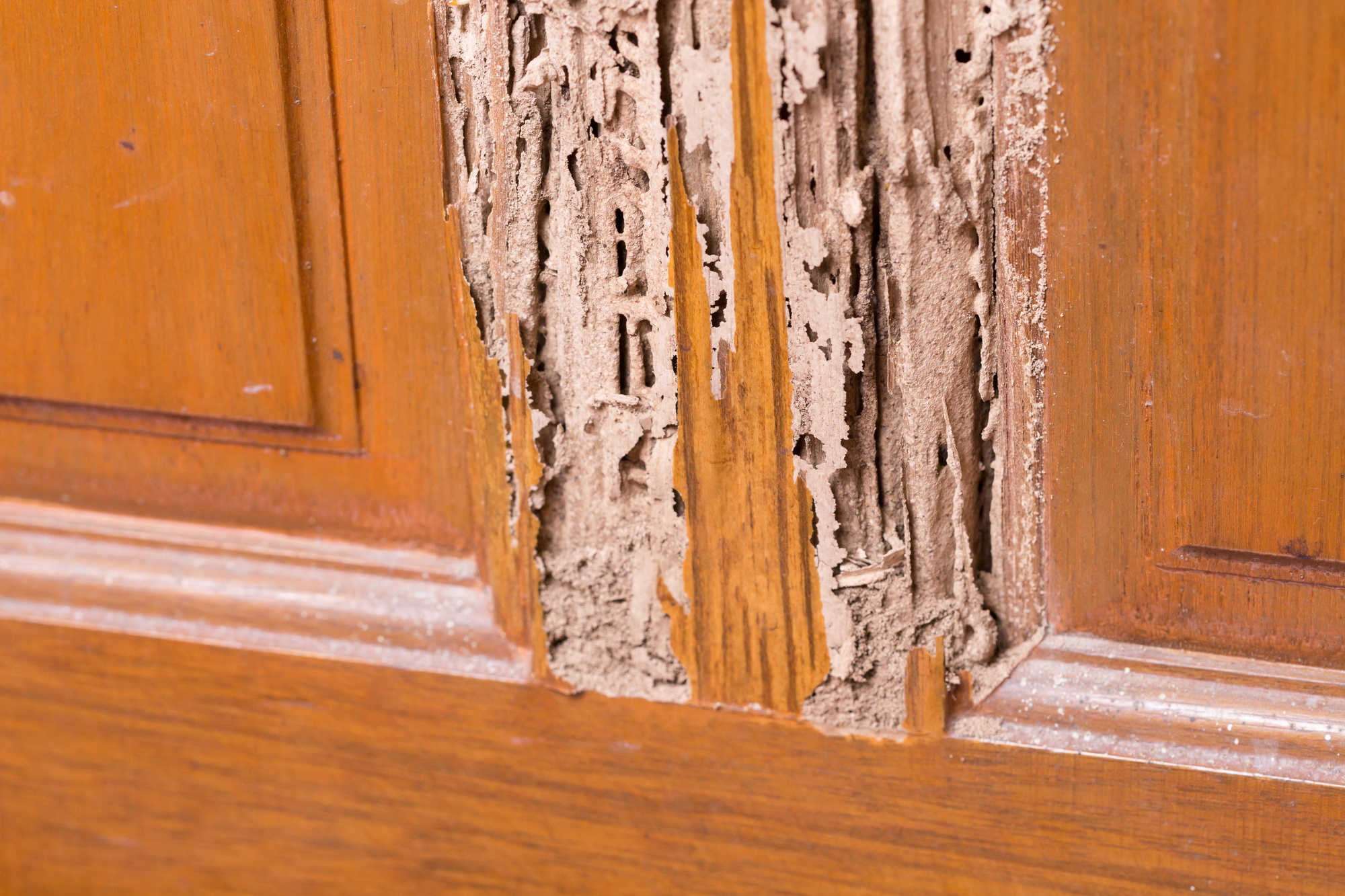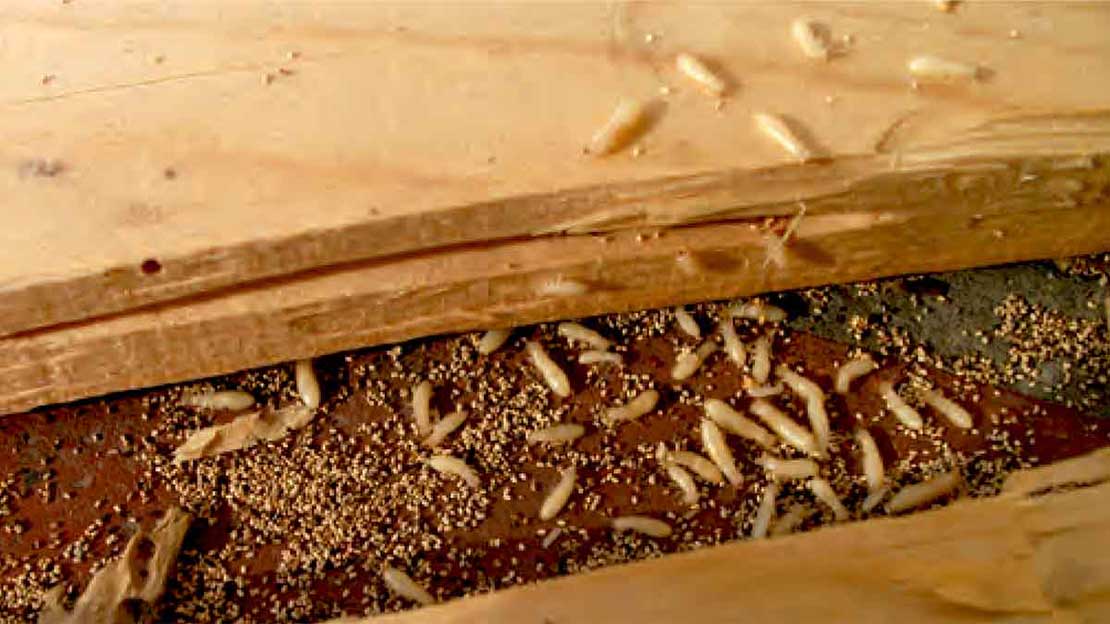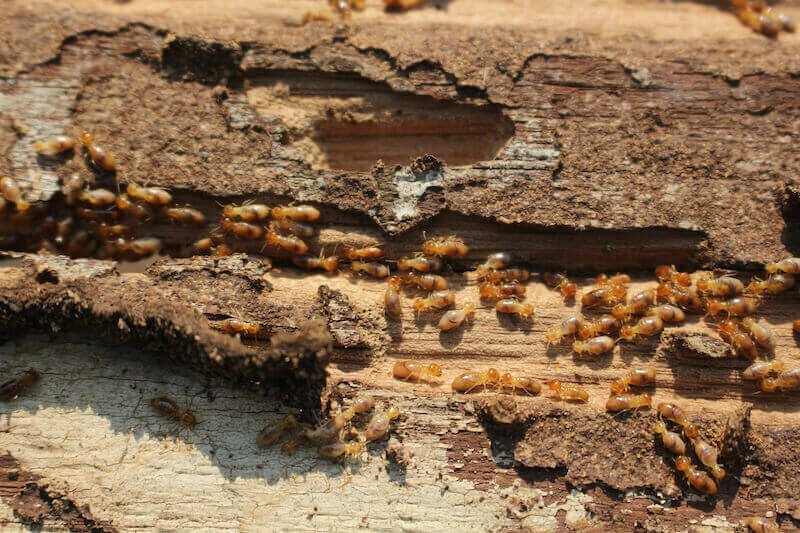Florida’s subtropical climate—featuring mild winters, high humidity, and consistent warmth—offers an ideal breeding ground for termites to thrive year-round. In North Port, a city that blends suburban comforts with the Gulf Coast’s natural beauty, these destructive insects can silently tunnel through wood framing, flooring, or furniture, causing significant property damage if not addressed. This service page explores why termites flourish in Florida, the clues signaling their presence, and why consulting a professional termite exterminator is your most dependable method to protect your home or business from extensive wood damage.
Whether you own a single-family residence in North Port or manage properties in neighboring Venice or Nokomis, early identification of termite issues—and employing targeted solutions—helps you avoid structural risks, occupant concerns, and the stress of repeating do-it-yourself methods that often miss hidden colonies.
Why Termites Thrive in Florida
Mild Winter Temperatures
Elsewhere in the U.S., long-term freezing kills or stalls termite activity for months. Florida’s gentle cold season seldom dips to subfreezing, letting termite colonies remain active—feeding, breeding, and expanding year-round. Indoors, climate control (about 65–85°F) eliminates seasonal slowdowns, giving termites continuous feeding opportunities.
High Humidity and Moisture
Termites, especially subterranean varieties, rely on damp soil or moist wood. Florida’s frequent rainfall or irrigation, combined with the region’s humidity, supports these insects’ mud tubes and underground nests. Even small leaks under sinks or condensation from air conditioners give termites the moisture they need to sustain foraging routes indoors.
Ample Wood Sources
From structural framing and trim to exterior fencing or mulch, Florida properties often present abundant cellulose-based materials for termites to consume. In multi-unit buildings or shared walls, once an infestation begins, it can spread quickly if occupant vigilance, sealing, or professional treatment is absent.
Rapid Colony Growth
A single termite queen lays numerous eggs daily, while worker termites roam extensively, searching for fresh wood. Warm, consistent temperatures accelerate hatching and colony maturation behind walls or under floors. Early occupant or property manager detection remains vital to preventing these silent feeders from causing major harm.
Regular Movement of Goods
In Florida, ongoing relocations, tourism, and deliveries inadvertently transfer wood items—pallets, crates, or secondhand furniture—potentially harboring hidden termite nests. Coastal hubs like Venice or Nokomis see added occupant turnover, amplifying the risk of termite spread if occupant or staff oversight is not enforced.

Telltale Signs of a Termite Infestation
- Mud Tubes
- Subterranean termites build pencil-thin tunnels (mud tubes) along foundation walls, crawl space supports, or hidden beams.
- Spotting these tubes bridging soil and wood is a strong indicator of active termite travel paths.
- Subterranean termites build pencil-thin tunnels (mud tubes) along foundation walls, crawl space supports, or hidden beams.
- Discarded Wings
- Winged termites (swarmers) shed their transparent wings after mating, commonly found near windows, doorways, or light sources.
- Clusters of wings around baseboards or windowsills suggests an emerging colony nearby.
- Winged termites (swarmers) shed their transparent wings after mating, commonly found near windows, doorways, or light sources.
- Hollow or Damaged Wood
- Termites consume wood from the inside out, leaving a thin exterior that sounds hollow when tapped.
- Blistering paint or slight warping can also signal termite feeding underneath.
- Termites consume wood from the inside out, leaving a thin exterior that sounds hollow when tapped.
- Drywood Termite Frass (Pellets)
- Tiny, ridged pellets resembling fine sawdust or coffee grounds appear if drywood termites push waste out of infested wood.
- Typically found in small piles beneath holes or cracks where termites expel waste.
- Tiny, ridged pellets resembling fine sawdust or coffee grounds appear if drywood termites push waste out of infested wood.
- Swarmers
- During warm, humid months, winged termites leave colonies to form new ones, known as a swarm.
- Observing swarmers indoors or near the property strongly indicates an established colony close by.
- During warm, humid months, winged termites leave colonies to form new ones, known as a swarm.
- Sticky Windows or Doors
- Internal wood damage can cause frames to warp or swell, making windows or doors difficult to open.
- Combined with other signs, this strongly suggests concealed termite tunneling.
- Internal wood damage can cause frames to warp or swell, making windows or doors difficult to open.
Why Ignoring Termites Poses Dangers
Structural Compromise
Termites eat wood from within, weakening critical load-bearing components. Over time, severe infestations lead to sagging floors, cracked drywall, or partial collapse, demanding extensive reconstruction.
Expanding Colony Reach
Subterranean termites, in particular, build large underground systems. Neglected colonies can spread between multiple areas of a building or to adjacent structures, multiplying overall damage and heightening the scope of treatments required.
Escalating Repair Costs
Tackling minor infestations early may only require localized spot treatments or partial fumigation. Delaying until termites infest entire walls or floors can force full-structure fumigation, occupant relocation, and major structural fixes.
Mold or Fungus Risk
Moisture accumulation tied to subterranean termite tunnels fosters mold or fungus growth in wood, posing added occupant health hazards. Combined with weakened wood, mold exacerbates property damage.
Psychological and Financial Strain
Termite damage often isn’t covered by standard homeowner’s insurance, leaving repair costs to property owners. Uncertainty about hidden destruction behind walls causes occupant stress, especially once knowledge of active termites surfaces.
Why a Professional Termite Exterminator Is Crucial
Detailed Colony Identification
A termite exterminator inspects crawl spaces, attics, basements, or yard edges for mud tubes, frass, or soft wood. Confirming whether termites are subterranean, drywood, or Formosan dictates whether soil barriers, fumigation, or local spot treatments are suitable. Accurate detection helps occupant synergy focus on the correct approach.
Advanced Elimination Methods
DIY termite sprays rarely eradicate entire colonies hidden behind walls or underground. Professionals offer solutions like:
- Soil Termiticides: Creating chemical barriers under foundations for subterranean colonies.
- Bait Stations: Slow-acting poisons brought back by worker termites to kill entire nests.
- Fumigation: Tenting the structure for deep-seated drywood termite infestations.
- Localized Injections: Foams or liquids for smaller, contained pockets.
Safe, Regulated Product Usage
Incorrectly applied chemicals can harm occupants, pets, or local water systems. Licensed exterminators adhere to strict guidelines and occupant-safety measures when injecting termiticides, performing fumigations, or applying foam to affected wood areas.
Long-Term Monitoring
Because termite eggs or hidden colonies may persist, many professionals provide annual or periodic inspections post-treatment, ensuring no fresh mud tubes or swarmers surface. Occupants receive pointers—like removing wood-soil contact or sealing cracks—to prevent new colonies from forming.
Warranties or Service Plans
Many reputable termite exterminators offer warranties or service agreements that include re-treatment if termites return within a specified timeframe. This peace of mind spares property owners from unplanned expenses if hidden pockets or newly arrived termites attempt to reinfest the structure.

Typical Methods for Termite Treatments
- Inspection & Colony Determination
- Technicians locate mud tubes, frass, or hollow wood in basements, crawl spaces, or attic beams.
- Figuring out whether you have subterranean or drywood termites shapes whether soil barriers, fumigation, or spot injections are best.
- Technicians locate mud tubes, frass, or hollow wood in basements, crawl spaces, or attic beams.
- Soil Termiticides
- For subterranean species, exterminators trench or inject termiticide around foundations.
- Termites crossing treated soil pick up poison, devastating the entire colony over time.
- For subterranean species, exterminators trench or inject termiticide around foundations.
- Bait Stations
- Slow-acting toxins placed in the ground near foundations or known termite foraging routes.
- Worker termites ingest and bring it back to the nest, ensuring colony-wide impact.
- Slow-acting toxins placed in the ground near foundations or known termite foraging routes.
- Fumigation (Tenting)
- Ideal for extensive drywood termite infiltrations. The structure is sealed under a tent, and gas saturates every wood layer.
- Occupants vacate temporarily until monitors confirm it’s safe to return.
- Ideal for extensive drywood termite infiltrations. The structure is sealed under a tent, and gas saturates every wood layer.
- Spot or Localized Treatments
- Smaller or newly found drywood colonies might be addressed with foam or liquid termiticides injected into wood voids.
- Re-inspections confirm no hidden sections remain active.
- Smaller or newly found drywood colonies might be addressed with foam or liquid termiticides injected into wood voids.
- Moisture Control & Wood Repairs
- Fixing leaks, improving drainage, or replacing damp wood hamper subterranean termite intrusions reliant on water.
- Sealing cracks in eaves or attics repels drywood termites searching for entrance points.
- Fixing leaks, improving drainage, or replacing damp wood hamper subterranean termite intrusions reliant on water.
- Continual Monitoring
- Many termite experts offer annual or semi-annual inspections to catch new signs early.
- Occupants remain alert for mud tubes, frass, or swarming alates, promptly reporting them to professionals.
- Many termite experts offer annual or semi-annual inspections to catch new signs early.
Service Areas: North Port, Venice, Nokomis
Though termites can surface anywhere in Florida, this page concentrates on North Port, a growing city bridging suburban expansions and the Gulf Coast. Our termite exterminator solutions also serve:
- Venice: A charming beach community attracting visitors and new residents, inadvertently ferrying termites via wooden crates or secondhand items.
- Nokomis: Combining small-town living with coastal proximity, structures remain vulnerable to both subterranean moisture or unsealed cracks letting drywood termites nest.
Florida’s mild winters keep termites active year-round, meaning occupant synergy and specialized professional treatments remain vital to removing them entirely.

Why Choose Us
Florida-Centric Methods
We adapt recognized termite control strategies—soil termiticides, fumigation, bait stations—to southwestern Florida’s environment, occupant lifestyles, and building setups. By tying occupant or property manager moisture management and sealing with advanced termite extermination, we achieve comprehensive solutions beyond partial do-it-yourself attempts.
Meticulous Inspections
Before applying chemicals, technicians thoroughly check foundations, attics, basements, or yard edges for mud tubes, wood hollows, or frass. If they confirm significant infiltration, they may recommend fumigation or robust soil barriers. Minor or localized pockets might only demand spot injections or smaller-scale actions.
Safe, Regulated Treatments
We apply insecticides adhering to occupant and environmental safety guidelines. Soil termiticides remain underground, fumigations occur under sealed tents with occupant re-entry only once cleared, and foam injections stay confined to impacted wood. Termite kills remain potent while occupant well-being is safeguarded.
Guidance on Prevention
Even after eliminating colonies, occupant synergy—like replacing rotted wood, reducing wood-soil contact, or improving drainage—denies termites fresh entry. This occupant-professional alliance cements a termite-resistant environment in Florida’s conducive climate.
Follow-Up, Warranties, or Service Plans
Because termites may attempt a comeback, we provide re-check visits or encourage occupant vigilance. Many termite exterminators offer warranties, ensuring if new mud tubes or swarmers appear within a specific period, retreatments cover them. Occupants rest assured no hidden pockets rebuild unimpeded.
Next Steps
Noticing mud tubes on foundation walls, hollow-sounding wood frames, or discarded termite wings near windows? Contact us to learn more or schedule your service. Our termite treatments in North Port, Venice, and Nokomis blend in-depth property inspections, advanced solutions (soil barriers, fumigation, or baits), occupant-friendly sealing and moisture tips, plus essential follow-ups—fully eradicating existing termite colonies while preventing new infiltrations.
Swift intervention spares occupant distress, structural compromise, and deeper infiltration behind walls that inflate repair costs. Trust our Florida-tailored termite exterminator expertise to pinpoint, eliminate, and deter these wood-destroying insects, preserving your property’s stability and occupant comfort regardless of Florida’s year-round termite activity.
Maintaining a Termite-Free Property
After professionals eliminate termites, occupant diligence staves off re-infestation:
- Eliminate Wood-Soil Contact
- Keep fence posts, porch supports, or mulch from direct contact with soil or building exteriors.
- Store firewood or scrap lumber off the ground and away from walls.
- Keep fence posts, porch supports, or mulch from direct contact with soil or building exteriors.
- Fix Leaks & Dampness
- Repair dripping faucets, AC lines, or roof seepage near wooden structures.
- Direct downspouts away from foundations, limiting moist soil where subterranean termites build mud tubes.
- Repair dripping faucets, AC lines, or roof seepage near wooden structures.
- Tap and Inspect Wood
- Regularly check door frames, baseboards, or beams for hollow sounds that might mask internal termite galleries.
- Light blistering or peeling paint can reveal underlying termite damage.
- Regularly check door frames, baseboards, or beams for hollow sounds that might mask internal termite galleries.
- Use Treated or Sealed Wood
- For decks, fences, or external additions, choose pressure-treated wood or apply sealants and paints, deterring subterranean or drywood termite intrusion.
- Painted lumber is less alluring to drywood termites seeking unprotected cellulose.
- For decks, fences, or external additions, choose pressure-treated wood or apply sealants and paints, deterring subterranean or drywood termite intrusion.
- Remove Debris & Rot
- Clearing yard litter or rotting stumps reduces subterranean termite foraging.
- Keep mulch a few inches from walls, avoiding direct soil-to-wood contact that entices termites.
- Clearing yard litter or rotting stumps reduces subterranean termite foraging.
- Seal Cracks or Openings
- Caulk cracks in eaves, siding, or attic vents, hampering drywood termite entry.
- Subterranean termites require minimal openings for mud tube expansion under walls.
- Caulk cracks in eaves, siding, or attic vents, hampering drywood termite entry.
- Yearly or Semi-Annual Checks
- Scheduling regular professional inspections catches emergent termite mud tubes, frass, or wings promptly.
- Occupants spotting suspicious droppings or softened wood should call for immediate re-check, halting new colonies swiftly.
- Scheduling regular professional inspections catches emergent termite mud tubes, frass, or wings promptly.
By intertwining occupant practices—like sealing cracks, removing moisture, or restricting direct soil-wood contact—and specialized termite treatments, property owners in North Port, Venice, or Nokomis effectively counter Florida’s year-round termite threat. Despite mild winters fueling consistent termite activity, occupant vigilance plus professional synergy denies these insects the chance to erode structural integrity or occupant comfort.
